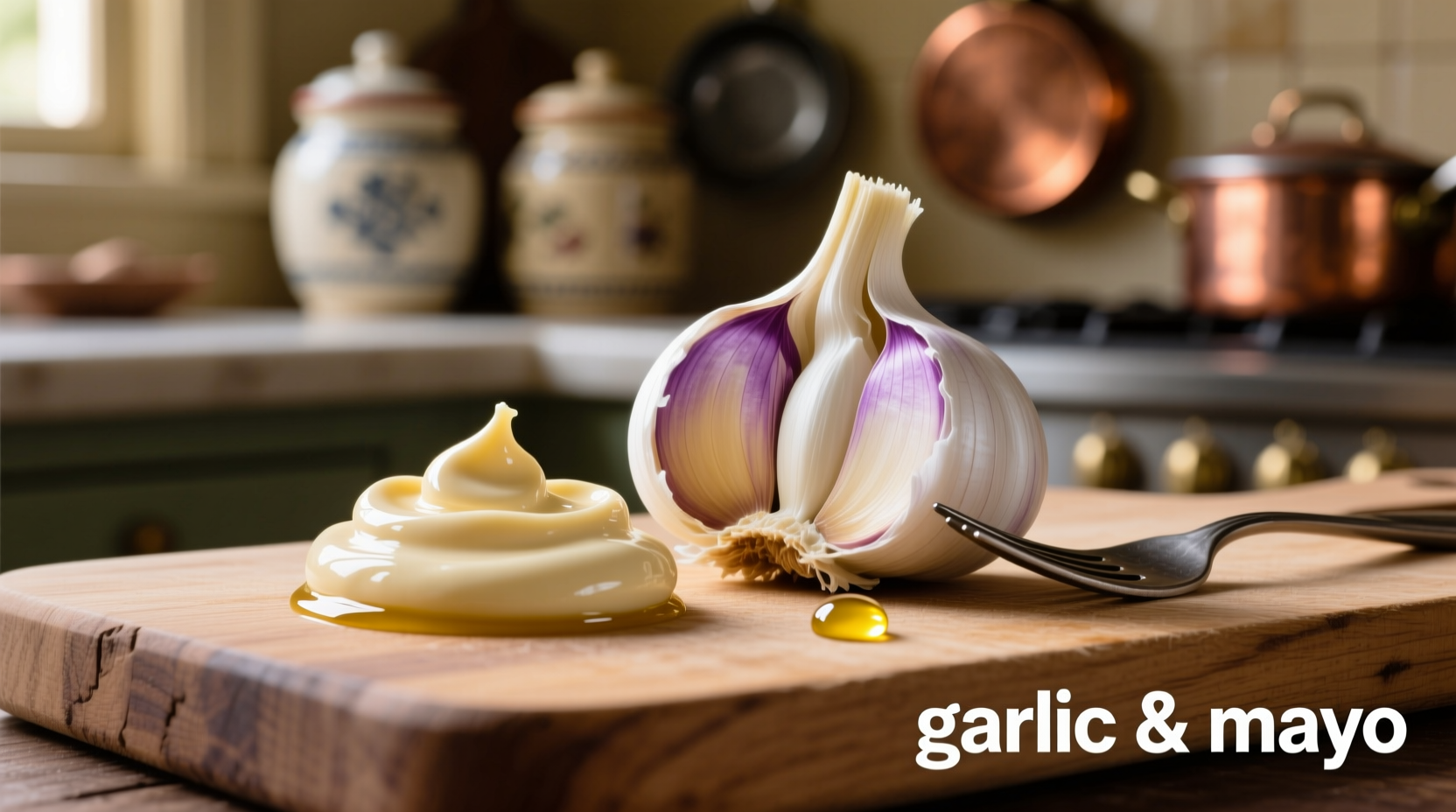The Essential Garlic Mayo Guide: More Than Just a Condiment
When garlic meets mayonnaise, magic happens. This dynamic duo creates a flavor powerhouse that elevates ordinary meals with minimal effort. Unlike traditional aioli—which requires laborious mortar-and-pestle preparation with olive oil and raw garlic—modern garlic mayo delivers similar richness with pantry staples. The key lies in understanding how these ingredients interact at a molecular level.
Garlic contains allicin, the compound responsible for its pungent aroma and flavor, which activates when cells are ruptured through cutting or crushing. Mayonnaise, with its emulsified fat structure, perfectly captures and distributes these volatile compounds. This scientific synergy creates a balanced flavor profile where garlic's sharpness mellow into savory depth without overwhelming heat.
| Preparation Method | Garlic:Mayo Ratio | Resting Time | Flavor Intensity | Shelf Life |
|---|---|---|---|---|
| Quick Mix (immediate use) | 1 clove : 1/4 cup | None | Sharp, raw | 2 hours |
| Standard Preparation | 1-2 cloves : 1/4 cup | 30 minutes | Balanced, rounded | 5 days |
| Professional Technique | 3 cloves : 1/4 cup | 24 hours | Complex, mellow | 7 days |
Your Step-by-Step Preparation Path
Creating exceptional garlic mayo starts with ingredient selection. For garlic, fresh medium-sized cloves from current season's harvest provide optimal flavor without excessive bitterness. Avoid pre-minced garlic in jars, which often contains preservatives that alter the final taste. When selecting mayonnaise, choose a quality brand with simple ingredients—egg yolks, oil, vinegar, and salt—without artificial thickeners.
The preparation process follows three critical stages:
- Garlic preparation: Mince garlic finely using a sharp knife (not a press) to control cell rupture. For milder flavor, remove the green sprout from the center of each clove.
- Combining ingredients: Mix minced garlic thoroughly with mayonnaise using a silicone spatula, ensuring even distribution without incorporating excess air.
- Resting period: Cover and refrigerate for at least 30 minutes before serving. This crucial step allows allicin compounds to fully integrate with the fat molecules in the mayonnaise.
According to USDA food safety guidelines, garlic-in-oil preparations require special attention due to potential botulism risk. However, when combined with commercial mayonnaise—which has a pH below 4.1—garlic mayo remains safe for up to one week when properly refrigerated. The acidic environment created by the vinegar in mayonnaise prevents bacterial growth, making it significantly safer than garlic-in-oil infusions.

Flavor Variations & Customization
While classic garlic mayo shines with simplicity, thoughtful additions can transform it for specific culinary applications. The Spanish coastal regions perfected aioli by incorporating local ingredients, creating regional variations that inspire modern adaptations:
- Lemon-enhanced: Add 1 teaspoon fresh lemon juice per 1/4 cup mayo for brighter flavor that complements seafood
- Herb-infused: Mix in 1 tablespoon finely chopped parsley or chives for freshness that works well with roasted vegetables
- Spicy kick: Incorporate a pinch of cayenne or 1/4 teaspoon smoked paprika for depth that pairs with grilled meats
Understanding context boundaries prevents flavor disasters. Avoid adding acidic ingredients like vinegar or citrus directly to the base mixture before resting, as this can break the emulsion. Similarly, roasted garlic creates a different flavor profile—sweet and mellow rather than pungent—and works better in applications requiring subtle garlic notes.
Practical Applications and Storage Guidelines
Garlic mayo's versatility spans multiple meal categories when used appropriately. For sandwiches and burgers, apply a thin layer directly to bread to create a moisture barrier that prevents sogginess while adding flavor. As a dip, pair with roasted potatoes or raw vegetables, adjusting thickness with a teaspoon of milk if needed. When used as a sauce base, thin with broth or lemon juice to create dressings for grain bowls or salads.
Proper storage extends freshness and maintains food safety. Always use clean utensils when serving to prevent contamination, and store in an airtight container in the coldest part of your refrigerator (typically the back, not the door). The ideal temperature for storage is 40°F (4°C) or below. Discard if you notice any off odors, separation that doesn't reincorporate with stirring, or mold growth.
Professional chefs note that garlic flavor intensifies over time, so what tastes perfect on day one might become overpowering by day three. To maintain consistent quality, prepare smaller batches more frequently rather than making large quantities intended to last a week.











 浙公网安备
33010002000092号
浙公网安备
33010002000092号 浙B2-20120091-4
浙B2-20120091-4